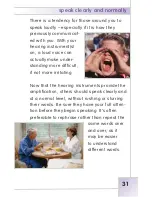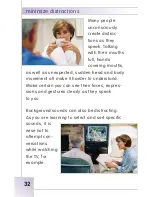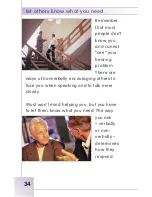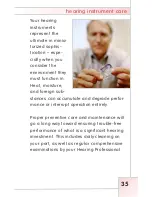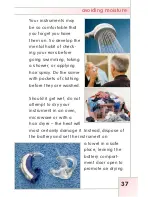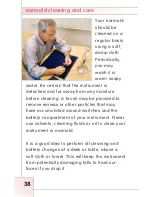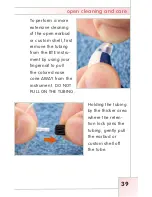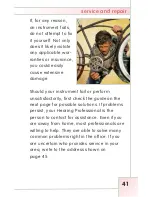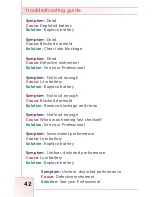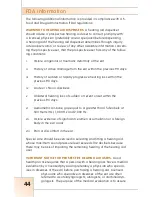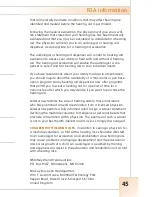
table of contents
45
that all medically treatable conditions that may affect hearing are
identified and treated before the hearing aid is purchased.
Following the medical evaluation, the physician will give you a writ-
ten statement that states that your hearing loss has been medically
evaluated and that you may be considered a candidate for a hearing
aid. The physician will refer you to an audiologist or hearing aid
dispenser, as appropriate, for a hearing aid evaluation.
The audiologist or hearing aid dispenser will conduct a hearing aid
evaluation to assess your ability to hear with and without a hearing
aid. The hearing aid evaluation will enable the audiologist or dis-
penser to select and fit a hearing aid to your individual needs.
If you have reservations about your ability to adapt to amplification,
you should inquire about the availability of a trial-rental or purchase-
option program. Many hearing aid dispensers now offer programs
that permit you to wear a hearing aid for a period of time for a
nominal fee after which you may decide if you want to purchase the
hearing aid.
Federal law restricts the sale of hearing aids to those individuals
who have obtained a medical evaluation from a licensed physician.
Federal law permits a fully informed adult to sign a waiver statement
declining the medical evaluation for religious or personal beliefs that
preclude consultation with a physician. The exercise of such a waiver
is not in your best health interest and its use is strongly discouraged.
CHILDREn WITH HEARInG LoSS.
In addition to seeing a physician for
a medical evaluation, a child with a hearing loss should be directed
to an audiologist for evaluation and rehabilitation since hearing loss
may cause problems in language development and the educational
and social growth of a child. An audiologist is qualified by training
and experience to assist in the evaluation and rehabilitation of a child
with a hearing loss.
©Starkey World Headquarters
P.O. Box 9457, Minneapolis, MN 55440
Starkey European Headquarters
Wm. F. Austin House, Bramhall Technology Park
Pepper Road, Hazel Grove, Stockport SK7 5BX,
United Kingdom
FDA information
your hearing instrument
page 1
identification
page 2
batteries
page 5
earmold insertion and removal
page 9
open insertion and removal
page 11
on and off
page 13
volume levels
page 14
multimemory settings
page 15
directional microphones
page 16
using the telephone
page 17
direct audio input
page 19
feedback
page 20
learning to hear well again
page 21
realistic expectations
page 22
the communication process
page 23
handling and wearing
page 24
adjusting to a noisy world
page 25
start in quiet, familiar places
page 26
focusing on specific sounds
page 27
hearing the television and radio
page 28
enjoy, but don’t overdo it
page 29
how family and friends can help
page 30
speak clearly and normally
page 31
minimize distractions
page 32
time for added consideration
page 33
let others know what you need
page 34
hearing instrument care
page 35
putting it in the right place
page 36
avoiding moisture
page 37
earmold cleaning and care
page 38
open cleaning and care
page 39
service and repair
page 41
troubleshooting guide
page 42

